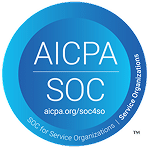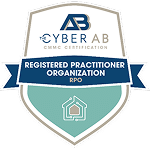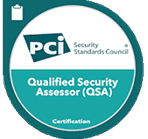Adhering to cybersecurity frameworks like Federal Information Security Management Act (FISMA) and the Federal Risk and Authorization Management Program (FedRAMP) is essential for organizations working with federal agencies. FISMA provides a broad security framework for federal agencies and their contractors, while FedRAMP focuses on standardizing cloud service security. Understanding their similarities and differences enables organizations to protect sensitive information in alignment with federal requirements and effectively enhance their security posture.
Established cybersecurity frameworks like FISMA and FedRAMP are not just best practices but essential for organizations, especially those collaborating with the federal government. These frameworks play a crucial role in ensuring the security of sensitive information.
While FISMA and FedRAMP are vital components of the federal government’s cybersecurity strategy, they target different aspects of information security. Therefore, understanding their nuances empowers businesses and instills confidence in their ability to determine which framework best suits their needs.
This blog explores the similarities, differences, and key attributes of FISMA and FedRAMP. It provides a deep understanding of these frameworks, equipping organizations with the knowledge to enhance their security posture, gain trust from federal agencies, and streamline operations, thereby significantly impacting the security of federal information systems.
Understanding FISMA and FedRAMP
What is FISMA?
Enacted in 2002 as part of the E-Government Act, FISMA mandates the protection of government information, operations, and assets against natural or human-made threats, including cyberattacks, data breaches, and insider threats. Its primary objective is to ensure that federal agencies and their contractors develop, document, and implement programs to secure the information systems supporting their operations. This risk-based approach requires regular assessments and reporting to maintain a robust security posture.
Before FISMA, federal agencies had varying levels of protection, leading to vulnerabilities across government networks. FISMA standardized these security measures, enhancing the overall security of federal information systems. The Federal Information Security Modernization Act of 2014 further refined the law.
FISMA applies to all federal agencies and their contractors, including organizations handling or processing information on behalf of a federal agency, such as cloud service providers (CSPs), government contractors, and third-party vendors. These entities must implement and maintain a comprehensive information security program that aligns with the standards set forth by the National Institute of Standards and Technology (NIST).
What is FedRAMP?
Established in 2011, FedRAMP provides a standardized approach to security assessment, authorization, and continuous monitoring for cloud products and services. Its primary objective is to ensure that CSPs meet stringent security requirements before offering services to federal agencies. This program not only streamlines the adoption of cloud technologies across federal agencies but also reduces time, cost, and effort while maintaining a high level of security.
FedRAMP was created in response to the growing adoption of cloud computing within the federal government and the need for a unified approach to securing cloud services. By consolidating security assessments into a standard set of requirements based on NIST guidelines, FedRAMP offers a streamlined path to cloud adoption.
Any CSP wishing to do business with the federal government must achieve FedRAMP authorization. This involves meeting a set of security controls and undergoing rigorous third-party assessments. The program covers various service models, ensuring that all aspects of cloud computing are secured.
Key Similarities Between FISMA and FedRAMP
FISMA and FedRAMP share the goal of significantly enhancing federal information security. Both emphasize the protection of sensitive data and the management of risks associated with information systems. Grounded in risk management principles, both frameworks require organizations to implement comprehensive security controls and conduct continuous monitoring to identify and address vulnerabilities in real-time.
Security Standards and Controls
FISMA and FedRAMP draw heavily on the National Institute of Standards and Technology (NIST) guidelines, which form the foundation for their security standards and controls. For example, NIST SP 800-53 is integral to both frameworks, offering a structured approach to selecting and implementing security controls.
The controls are categorized into families that address various aspects of information security, including access control, incident response, and continuous monitoring. They are designed to protect information systems across multiple sectors, particularly federal agencies and contractors. This systematic approach allows organizations to tailor their security posture based on their specific risk environment—a critical element in FISMA and FedRAMP compliance.
Key Differences Between FISMA and FedRAMP
Scope and Applicability
One of the primary differences between FISMA and FedRAMP is their scope and applicability. While FISMA applies broadly to federal agencies and their contractors, covering a wide range of information systems, FedRAMP is explicitly tailored for cloud service providers offering services to federal agencies. This difference in scope leads to variations in implementation and compliance processes.
Implementation and Process
FISMA requires each federal agency to develop and implement its information security program tailored to its specific needs and risks. This can lead to variations in how FISMA is applied across agencies. In contrast, FedRAMP provides a standardized process for cloud service providers, ensuring consistency in how cloud services are assessed and authorized for federal use.
Authorization and Certification
Another key difference is the authorization process. FISMA allows for agency-specific authorization processes, which vary depending on the agency’s requirements and risk tolerance. This approach gives agencies a sense of control and confidence in their security measures. On the other hand, FedRAMP uses a centralized authorization process managed by the Joint Authorization Board (JAB), involving rigorous third-party assessments. Once authorized, CSPs can offer their services across multiple federal agencies.
Security Controls Differentiators
FedRAMP requires the implementation of security controls specifically designed for cloud environments based on a subset of NIST guidelines. These controls address the unique risks associated with cloud computing:
- Multi-Tenancy: FedRAMP’s controls manage risks related to multiple customers sharing the same cloud infrastructure, ensuring proper data isolation and protection against cross-tenant data breaches.
- Data Segregation: FedRAMP mandates robust measures, including encryption and access controls, to prevent the inadvertent mixing of data from different customers or agencies.
- Dynamic Scaling: Cloud environments often involve rapidly scaling resources up or down. FedRAMP controls address the security implications of this dynamic nature, requiring continuous monitoring and adaptability in security practices.
- Continuous Monitoring and Incident Response: FedRAMP emphasizes the need for automated tools and processes to continuously monitor cloud environments, including real-time detection of vulnerabilities and threats and automated response mechanisms. Additionally, FedRAMP requires CSPs to have robust incident response plans that include cloud-specific scenarios, such as data breaches affecting multiple tenants or disruptions caused by scaling operations.
In contrast, FISMA employs a broader set of NIST guidelines applicable to various information systems, making its controls more generalized. These controls cover a wide range of information systems, from traditional IT infrastructure to newer technologies:
- Comprehensive Coverage: FISMA’s controls are designed to apply to various federal information systems, including those not cloud-based, and cover aspects such as physical security, network security, and personnel security.
- Risk Management Framework (RMF): FISMA utilizes NIST’s Risk Management Framework (RMF) to categorize information systems, select security controls, and monitor continuous activities. This framework is adaptable to different environments and provides a flexible approach to security.
Ultimately, whether managing traditional IT infrastructures or cloud services, navigating the complexities of FISMA and FedRAMP is critical for organizations aiming to align with federal cybersecurity requirements. By adopting the appropriate framework, your organization enhances operational efficiency, ensures compliance, and maintains a competitive edge in the federal marketplace.








